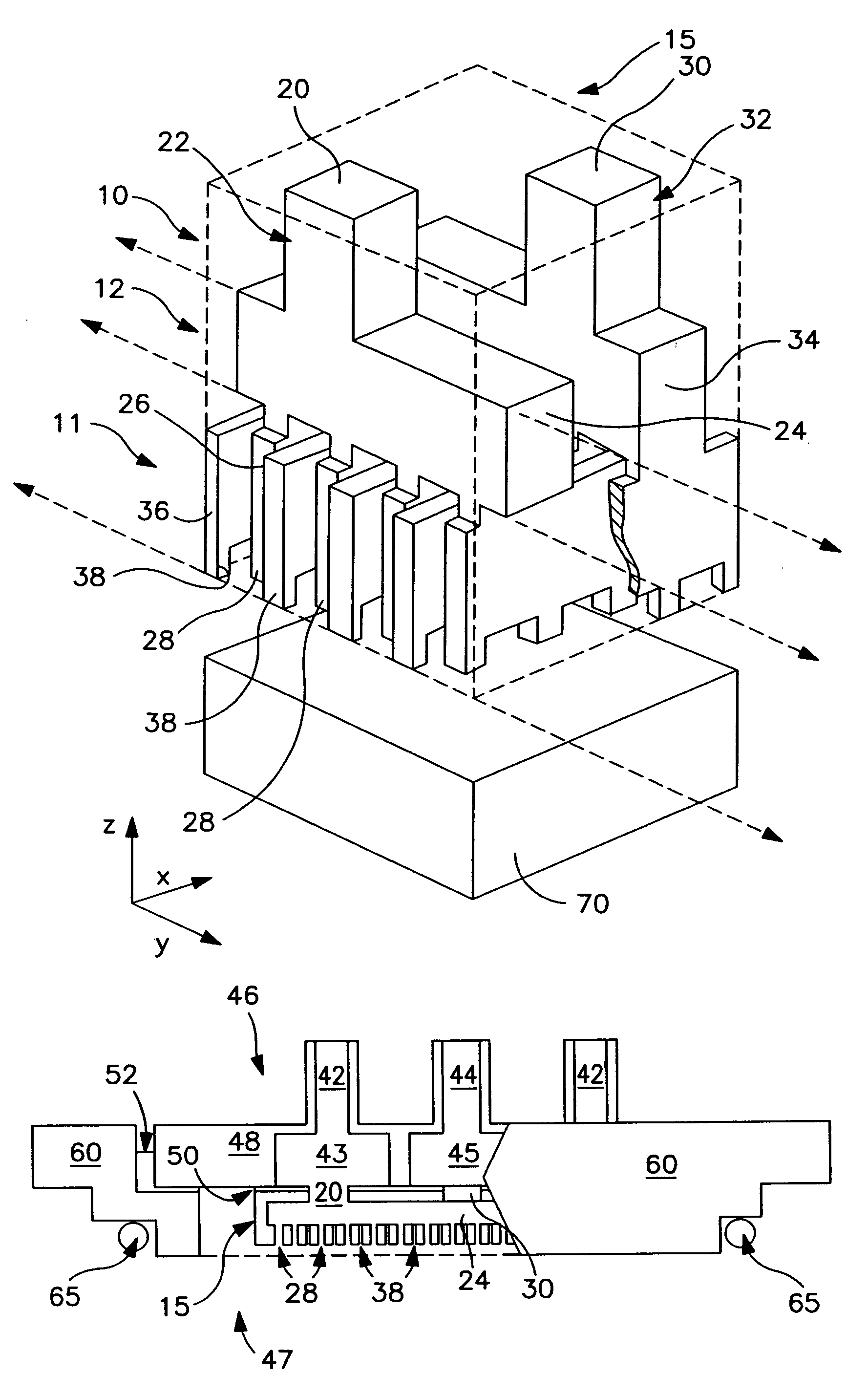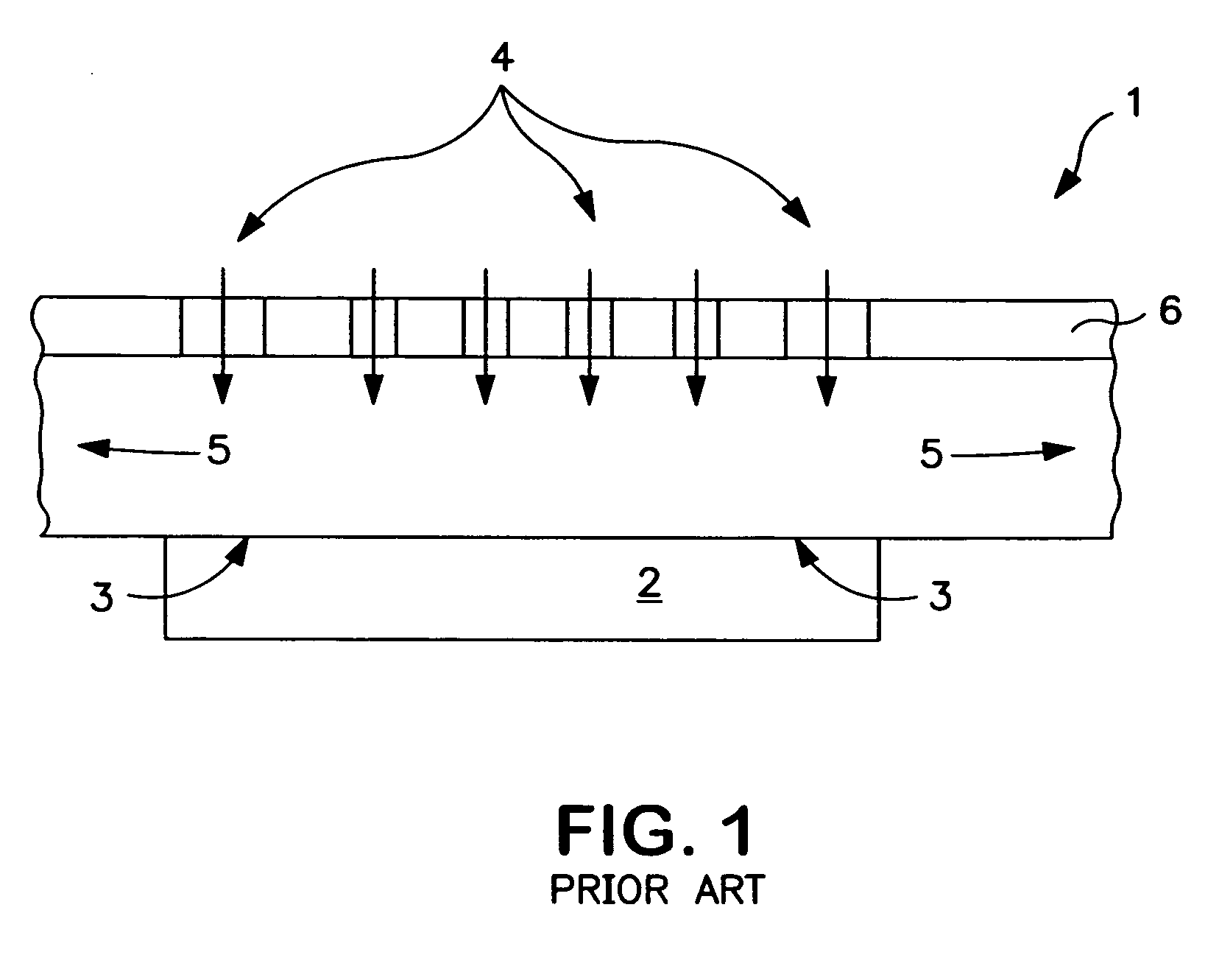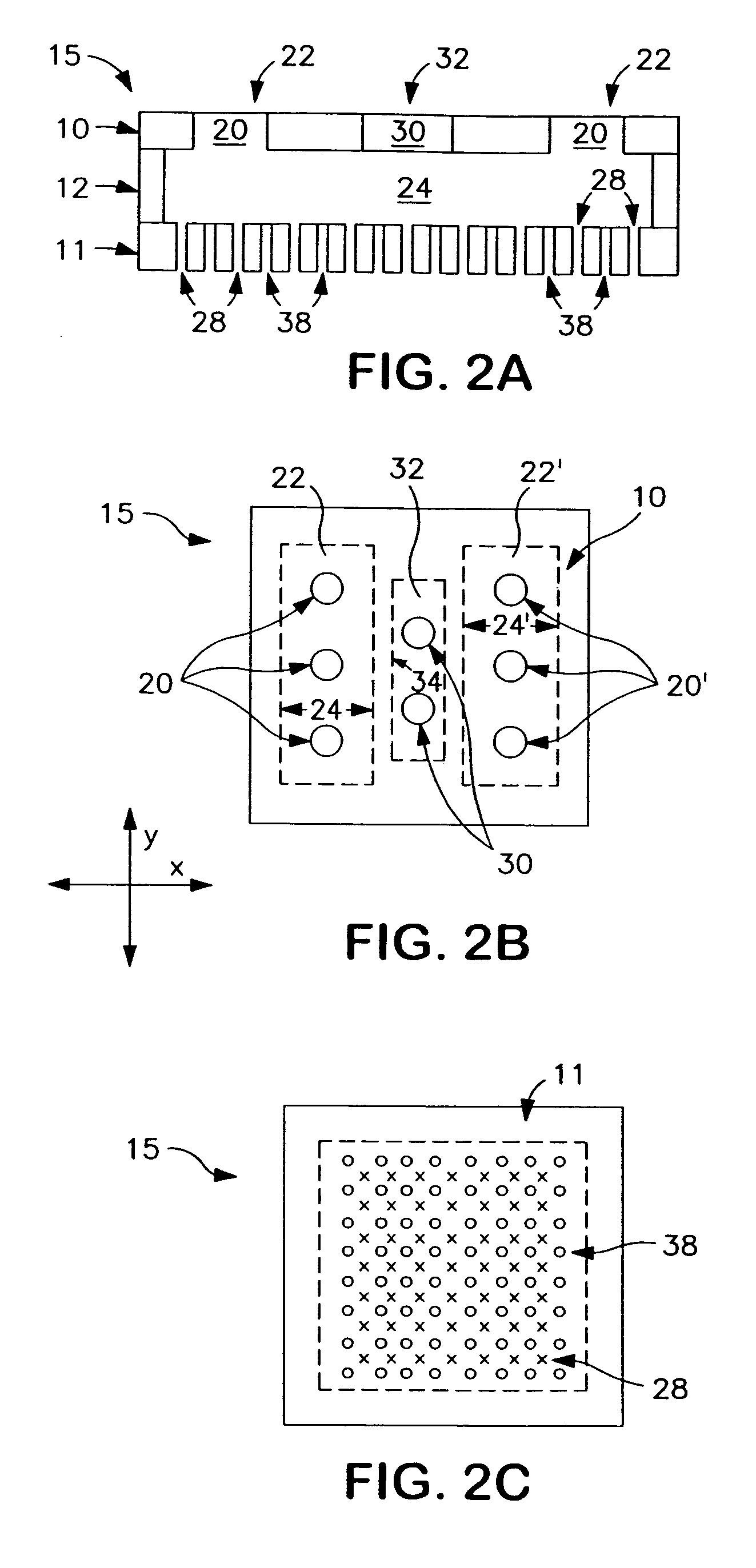Microjet module assembly
a technology of micro-jet modules and modules, which is applied in the direction of cooling/ventilation/heating modifications, semiconductor device details, semiconductor devices, etc., can solve the problems of large power flux, large thermal gradient, and inability to meet the demands of modern electronic devices, and achieve the effect of increasing thermal performan
- Summary
- Abstract
- Description
- Claims
- Application Information
AI Technical Summary
Benefits of technology
Problems solved by technology
Method used
Image
Examples
Embodiment Construction
)
[0037]In describing the preferred embodiment of the present invention, reference will be made herein to FIGS. 2A-6 of the drawings in which like numerals refer to like features of the invention.
[0038]The present invention is directed to low-pressure drop thermal assemblies, and methods of making the same, whereby these assemblies have a liquid impingement microjet inlet array isolated from a distributed microjet outlet or drain array for use in high power flux situations. These assemblies advantageously maximize the heat transfer rate in a high power dissipating assembly, and simultaneously assuring the mechanical integrity by limiting the fluid pressure drop below 10 psi. The thermal assemblies of the invention also isolate the active, i.e., functional side, of the semiconductor device from the rest of the thermal assembly to prevent fluid leakage onto such active side.
[0039]As shown in FIGS. 2A-D, a fluid distribution structure 15 is an essential component of the present low-pres...
PUM
 Login to View More
Login to View More Abstract
Description
Claims
Application Information
 Login to View More
Login to View More - R&D
- Intellectual Property
- Life Sciences
- Materials
- Tech Scout
- Unparalleled Data Quality
- Higher Quality Content
- 60% Fewer Hallucinations
Browse by: Latest US Patents, China's latest patents, Technical Efficacy Thesaurus, Application Domain, Technology Topic, Popular Technical Reports.
© 2025 PatSnap. All rights reserved.Legal|Privacy policy|Modern Slavery Act Transparency Statement|Sitemap|About US| Contact US: help@patsnap.com



